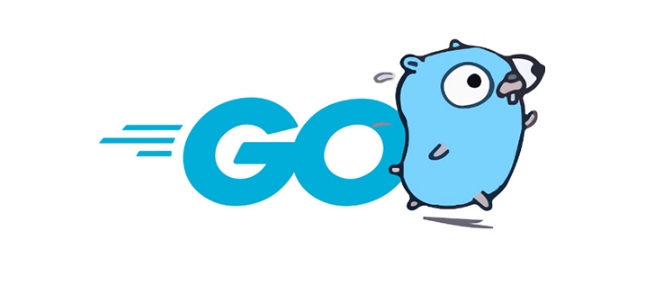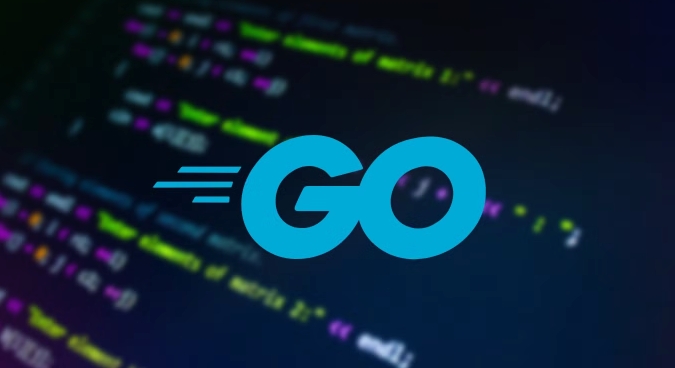 Backend Development
Backend Development
 Golang
Golang
 Evaluating Code Readability and Maintainability: Golang vs Python Perspectives
Evaluating Code Readability and Maintainability: Golang vs Python Perspectives
Evaluating Code Readability and Maintainability: Golang vs Python Perspectives
Jul 03, 2025 am 02:40 AMWhen choosing between Golang and Python for code readability and maintainability, the decision hinges on team priorities. 1. Golang offers strict consistency with minimal, opinionated syntax and built-in tooling like gofmt, ensuring uniform code style and early error detection. 2. Python provides flexibility and expressiveness through its clean syntax but requires disciplined style enforcement and external tools like black and pylint, which need more setup. 3. Go excels in performance with goroutines, promoting readable concurrent code, while Python abstracts low-level details for simplicity but may require optimization trade-offs later. 4. Go’s ecosystem favors self-contained projects with manageable dependencies, whereas Python’s vast library support demands careful dependency management to avoid maintenance challenges.

When it comes to choosing between Golang and Python for a new project, one of the key considerations is how readable and maintainable the code will be over time. Both languages have strengths, but they approach code structure and clarity in very different ways. Here’s what you need to know when evaluating them from that angle.

Simplicity and Syntax: How Each Language Shapes Readability
Golang was designed with simplicity in mind — its syntax is minimal, almost opinionated. There's only one idiomatic way to do most things, which makes reading Go code feel consistent across projects. For example, Go doesn't support inheritance or generics (until recently), which reduces complexity but also limits abstraction options.

Python, on the other hand, gives developers more flexibility. Its syntax emphasizes readability through indentation and clean structure, making it beginner-friendly. However, this flexibility can sometimes lead to multiple ways of doing the same thing. While that’s great for expressiveness, it can make large codebases harder to maintain if teams don’t enforce style guides consistently.
So:

- If you want strict consistency and fewer language features to learn, Go might be better.
- If your team values expressive freedom and rapid prototyping, Python could be more suitable.
Tooling Support: How Tools Help Keep Code Clean
Both languages offer solid tooling, but their approaches differ.
Go comes with built-in tools like gofmt that automatically format code. This removes subjective debates about style and ensures uniformity across all code. Tools like go vet and static analysis features help catch issues early, contributing to long-term maintainability.
Python has tools too — like black for formatting and flake8 or pylint for linting — but they’re not part of the core distribution and require setup. That means maintaining Python code often depends more on team discipline and configuration management. With the right setup, though, Python can be just as well-maintained as Go.
Key takeaways:
- Go’s tooling is more opinionated and integrated by default.
- Python’s tooling is flexible but needs more initial effort to set up properly.
Performance vs. Clarity Trade-offs
In terms of performance, Go generally outperforms Python, especially for CPU-bound tasks. But how does that affect readability and maintenance?
Go’s concurrency model (goroutines) is powerful and clean, making it easier to write high-performance concurrent applications without overly complex code. The language encourages writing performant yet readable code.
Python, while slower in raw execution speed, allows for more concise and expressive code. It abstracts away many low-level details, which can make code easier to understand at a glance — until performance becomes a bottleneck. Then, you may need to introduce optimizations (like using C extensions or rewriting parts in another language), which can complicate the codebase.
So think about:
- Whether performance needs to be baked into the language from day one.
- How much abstraction trade-off you're willing to accept for developer productivity.
Community and Ecosystem Influence on Maintainability
A language’s ecosystem plays a big role in long-term code maintainability.
Go’s standard library is robust and covers a lot of ground, reducing reliance on third-party packages. The community tends to favor small, focused libraries, which helps keep dependencies manageable and code easier to audit.
Python’s ecosystem is vast, which is both a strength and a potential weakness. While there’s likely a package for anything you need, dependency chains can get messy. Also, some older Python packages may not follow modern best practices, introducing subtle maintenance challenges.
In practice:
- Go codebases tend to be more self-contained and less reliant on external libraries.
- Python projects benefit from rich libraries but need careful dependency management.
That’s a good breakdown of how Go and Python compare when it comes to writing and maintaining readable code. It really depends on your team’s priorities and constraints.
The above is the detailed content of Evaluating Code Readability and Maintainability: Golang vs Python Perspectives. For more information, please follow other related articles on the PHP Chinese website!

Hot AI Tools

Undress AI Tool
Undress images for free

Undresser.AI Undress
AI-powered app for creating realistic nude photos

AI Clothes Remover
Online AI tool for removing clothes from photos.

Clothoff.io
AI clothes remover

Video Face Swap
Swap faces in any video effortlessly with our completely free AI face swap tool!

Hot Article

Hot Tools

Notepad++7.3.1
Easy-to-use and free code editor

SublimeText3 Chinese version
Chinese version, very easy to use

Zend Studio 13.0.1
Powerful PHP integrated development environment

Dreamweaver CS6
Visual web development tools

SublimeText3 Mac version
God-level code editing software (SublimeText3)
 Is golang frontend or backend
Jul 08, 2025 am 01:44 AM
Is golang frontend or backend
Jul 08, 2025 am 01:44 AM
Golang is mainly used for back-end development, but it can also play an indirect role in the front-end field. Its design goals focus on high-performance, concurrent processing and system-level programming, and are suitable for building back-end applications such as API servers, microservices, distributed systems, database operations and CLI tools. Although Golang is not the mainstream language for web front-end, it can be compiled into JavaScript through GopherJS, run on WebAssembly through TinyGo, or generate HTML pages with a template engine to participate in front-end development. However, modern front-end development still needs to rely on JavaScript/TypeScript and its ecosystem. Therefore, Golang is more suitable for the technology stack selection with high-performance backend as the core.
 How to build a GraphQL API in golang
Jul 08, 2025 am 01:03 AM
How to build a GraphQL API in golang
Jul 08, 2025 am 01:03 AM
To build a GraphQLAPI in Go, it is recommended to use the gqlgen library to improve development efficiency. 1. First select the appropriate library, such as gqlgen, which supports automatic code generation based on schema; 2. Then define GraphQLschema, describe the API structure and query portal, such as defining Post types and query methods; 3. Then initialize the project and generate basic code to implement business logic in resolver; 4. Finally, connect GraphQLhandler to HTTPserver and test the API through the built-in Playground. Notes include field naming specifications, error handling, performance optimization and security settings to ensure project maintenance
 How to install Go
Jul 09, 2025 am 02:37 AM
How to install Go
Jul 09, 2025 am 02:37 AM
The key to installing Go is to select the correct version, configure environment variables, and verify the installation. 1. Go to the official website to download the installation package of the corresponding system. Windows uses .msi files, macOS uses .pkg files, Linux uses .tar.gz files and unzip them to /usr/local directory; 2. Configure environment variables, edit ~/.bashrc or ~/.zshrc in Linux/macOS to add PATH and GOPATH, and Windows set PATH to Go in the system properties; 3. Use the government command to verify the installation, and run the test program hello.go to confirm that the compilation and execution are normal. PATH settings and loops throughout the process
 Go sync.WaitGroup example
Jul 09, 2025 am 01:48 AM
Go sync.WaitGroup example
Jul 09, 2025 am 01:48 AM
sync.WaitGroup is used to wait for a group of goroutines to complete the task. Its core is to work together through three methods: Add, Done, and Wait. 1.Add(n) Set the number of goroutines to wait; 2.Done() is called at the end of each goroutine, and the count is reduced by one; 3.Wait() blocks the main coroutine until all tasks are completed. When using it, please note: Add should be called outside the goroutine, avoid duplicate Wait, and be sure to ensure that Don is called. It is recommended to use it with defer. It is common in concurrent crawling of web pages, batch data processing and other scenarios, and can effectively control the concurrency process.
 Go embed package tutorial
Jul 09, 2025 am 02:46 AM
Go embed package tutorial
Jul 09, 2025 am 02:46 AM
Using Go's embed package can easily embed static resources into binary, suitable for web services to package HTML, CSS, pictures and other files. 1. Declare the embedded resource to add //go:embed comment before the variable, such as embedding a single file hello.txt; 2. It can be embedded in the entire directory such as static/*, and realize multi-file packaging through embed.FS; 3. It is recommended to switch the disk loading mode through buildtag or environment variables to improve efficiency; 4. Pay attention to path accuracy, file size limitations and read-only characteristics of embedded resources. Rational use of embed can simplify deployment and optimize project structure.
 Go for Audio/Video Processing
Jul 20, 2025 am 04:14 AM
Go for Audio/Video Processing
Jul 20, 2025 am 04:14 AM
The core of audio and video processing lies in understanding the basic process and optimization methods. 1. The basic process includes acquisition, encoding, transmission, decoding and playback, and each link has technical difficulties; 2. Common problems such as audio and video aberration, lag delay, sound noise, blurred picture, etc. can be solved through synchronous adjustment, coding optimization, noise reduction module, parameter adjustment, etc.; 3. It is recommended to use FFmpeg, OpenCV, WebRTC, GStreamer and other tools to achieve functions; 4. In terms of performance management, we should pay attention to hardware acceleration, reasonable setting of resolution frame rates, control concurrency and memory leakage problems. Mastering these key points will help improve development efficiency and user experience.
 How to build a web server in Go
Jul 15, 2025 am 03:05 AM
How to build a web server in Go
Jul 15, 2025 am 03:05 AM
It is not difficult to build a web server written in Go. The core lies in using the net/http package to implement basic services. 1. Use net/http to start the simplest server: register processing functions and listen to ports through a few lines of code; 2. Routing management: Use ServeMux to organize multiple interface paths for easy structured management; 3. Common practices: group routing by functional modules, and use third-party libraries to support complex matching; 4. Static file service: provide HTML, CSS and JS files through http.FileServer; 5. Performance and security: enable HTTPS, limit the size of the request body, and set timeout to improve security and performance. After mastering these key points, it will be easier to expand functionality.
 Go select with default case
Jul 14, 2025 am 02:54 AM
Go select with default case
Jul 14, 2025 am 02:54 AM
The purpose of select plus default is to allow select to perform default behavior when no other branches are ready to avoid program blocking. 1. When receiving data from the channel without blocking, if the channel is empty, it will directly enter the default branch; 2. In combination with time. After or ticker, try to send data regularly. If the channel is full, it will not block and skip; 3. Prevent deadlocks, avoid program stuck when uncertain whether the channel is closed; when using it, please note that the default branch will be executed immediately and cannot be abused, and default and case are mutually exclusive and will not be executed at the same time.





